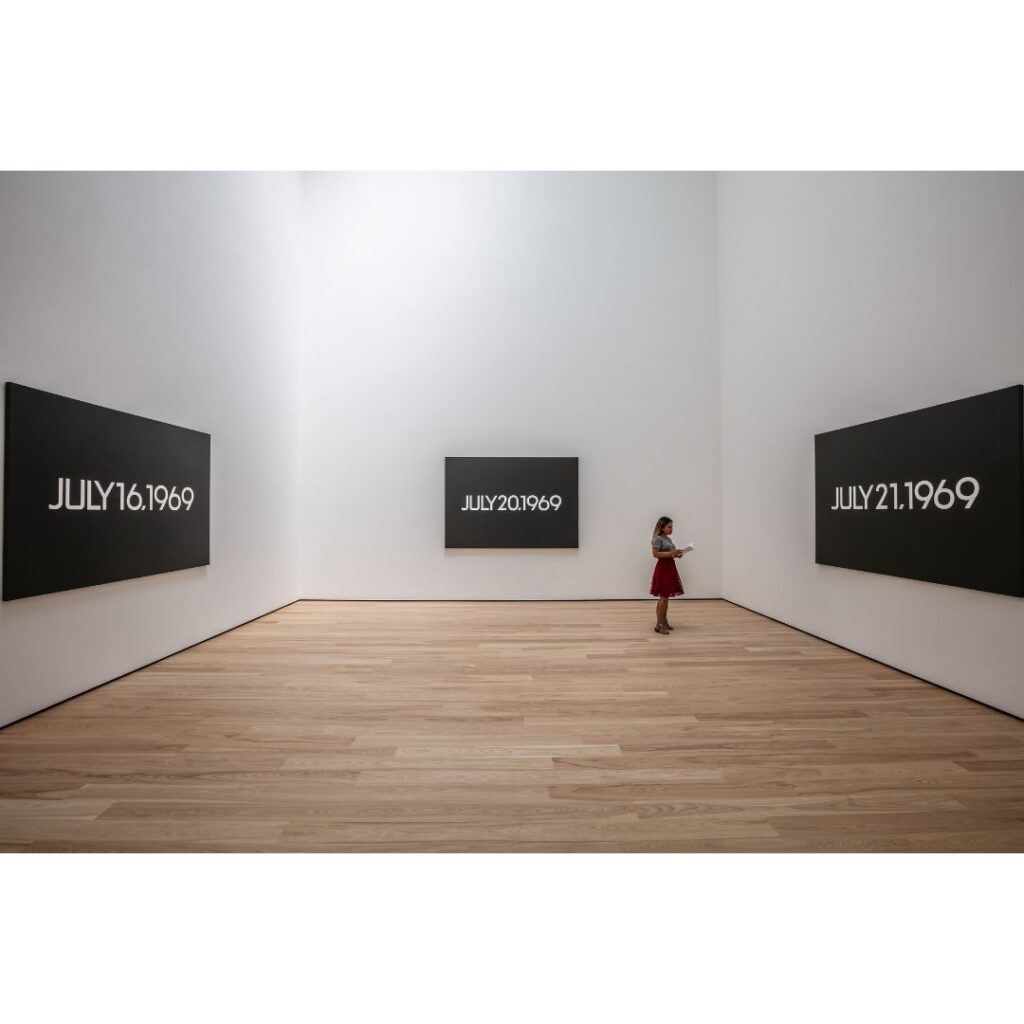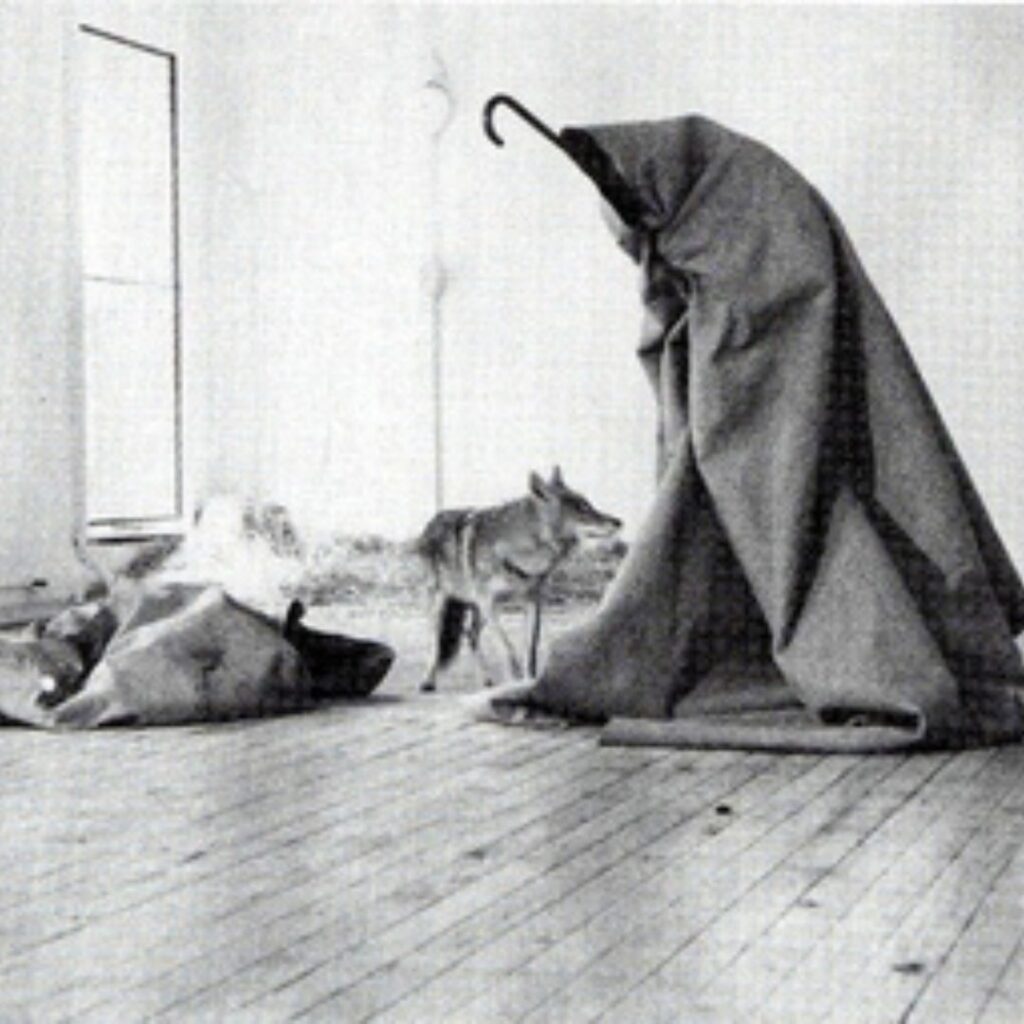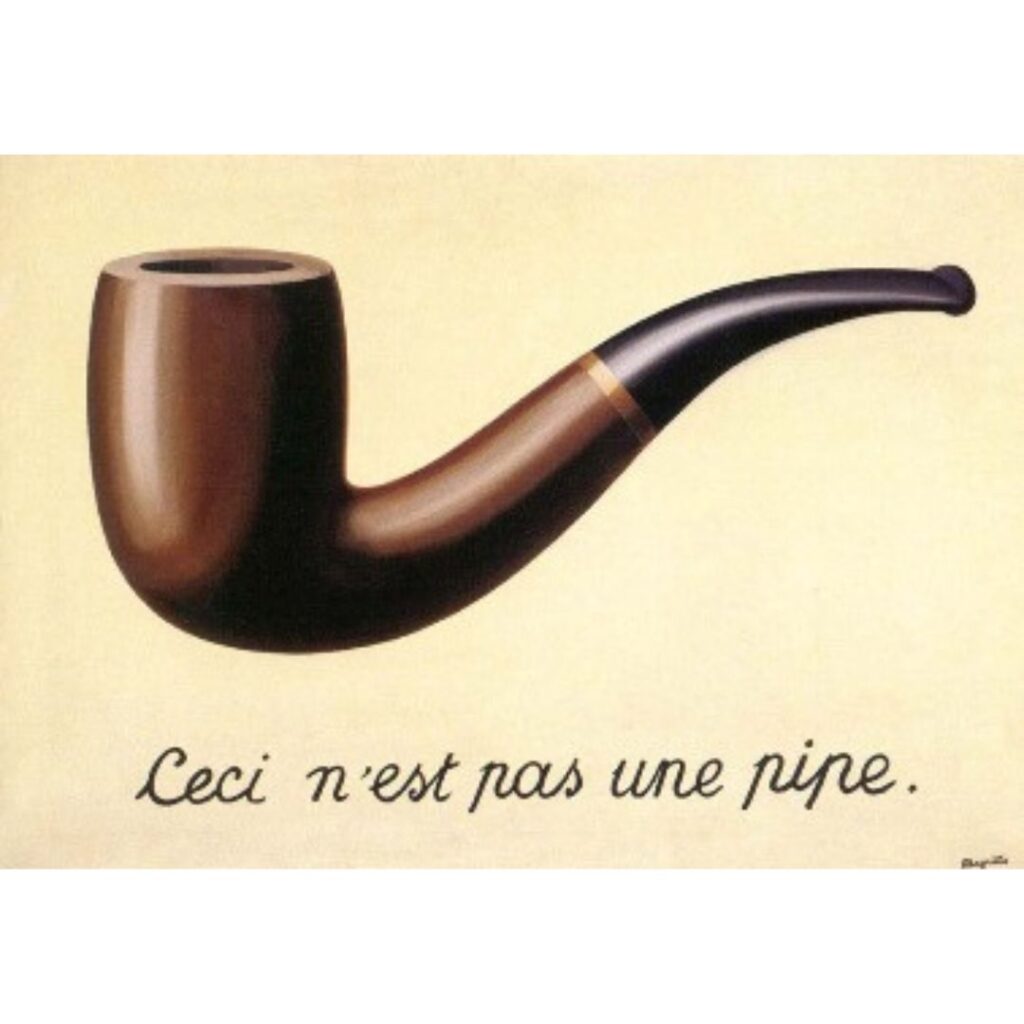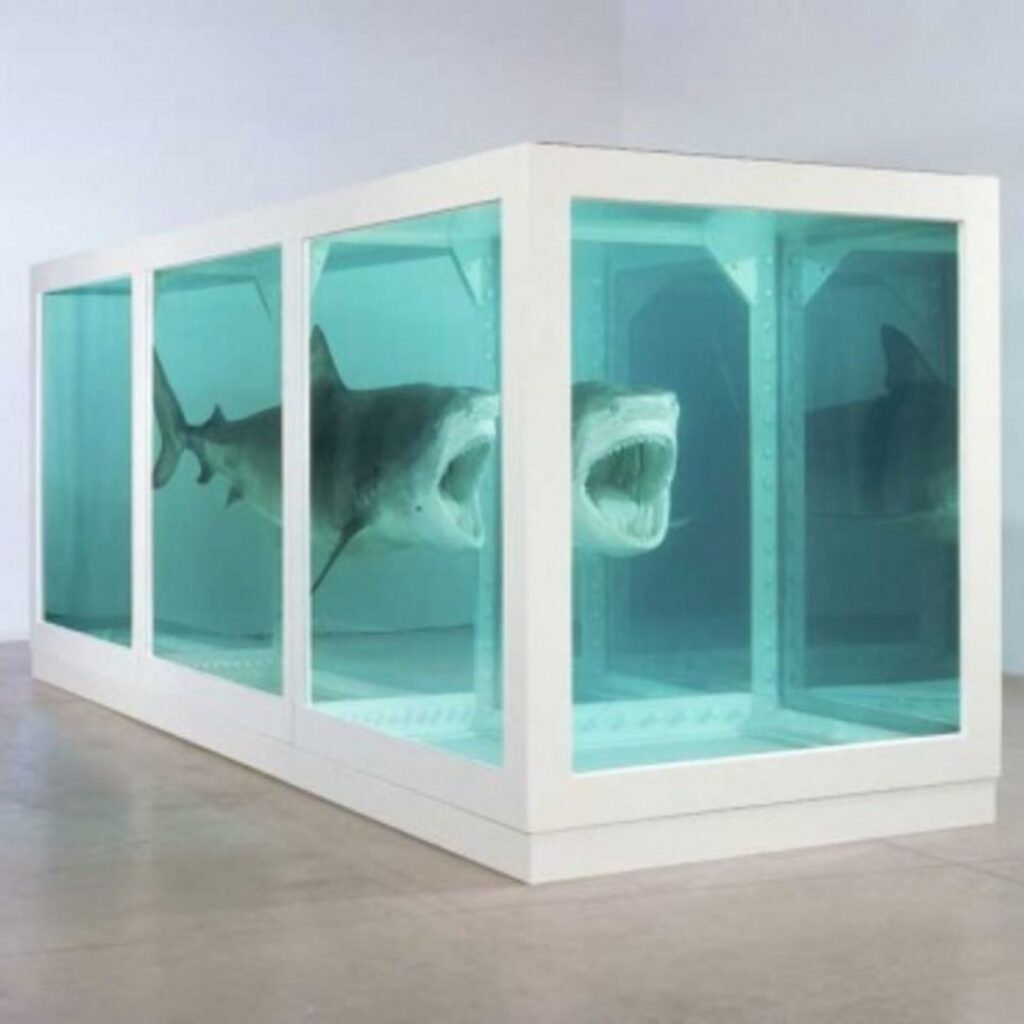Conceptual art has always been a mind-blowing kind of art. The art form can sometimes be hard to wrap your head around.
Conceptual art is a style of contemporary art that emphasizes the idea or concept behind the artwork rather than the visual form or aesthetics. It emerged in the 1960s as a reaction against the commercialization of the art world and the focus on material objects.
Table of Contents
- What Is Conceptual Art?
- Our Top 10 Examples of Mind-Blowing Conceptual Artist And Their Art Work
- Fountain (1917) By Marcel Duchamp
- One And Three Chairs (1965) By Joseph Kosuth
- In And Out Of Love (1969) By On Kawara
- I Like America And America Likes Me (1974) By Joseph Beuys
- A Line Made By Walking (1967) By Richard Long
- Untitled (Perfect Lovers) (1991) By Felix Gonzalez-Torres
- My Bed (1998) By Tracey Emin
- The Treachery of Images (1929) By Rene Magritte
- The Physical Impossibility Of Death In The Mind Of Someone Living (1991) By Damien Hirst
- Tilted Arc (1981) By Richard Serra
- Thoughts About Conceptual Art
- Frequently Asked Questions
- Related Questions
What Is Conceptual Art?
Conceptual art has always been a fascinating and thought-provoking genre that challenges traditional forms of artistic expression. Unlike traditional art, which focuses on aesthetics and visual appeal, conceptual art prioritizes the idea behind the artwork.
At the heart of Conceptual art, the artists seek to challenge traditional notions of what art can be and often use unconventional materials and techniques to convey their ideas.
Our Top 10 Examples of Mind-Blowing Conceptual Artist And Their Art Work
We explore the world of conceptual art and showcase ten innovative and thought-provoking examples that will blow your mind. By examining these works’ themes, techniques, and contexts, we will gain a deeper appreciation for the power of ideas and how they can transform our understanding of the world.
So get ready to be inspired and challenged by these groundbreaking examples of conceptual art. Here, we have compiled a list of the top 10 examples of conceptual art that will surely blow your mind.
Fountain (1917) By Marcel Duchamp

The fountain is a porcelain urinal signed by “R. Mutt” and submitted for exhibition to the Society of Independent Artists in 1917. Duchamp’s Fountain challenged the traditional notions of art and created a new art form based on the idea rather than the object. This piece has since become an iconic example of conceptual art.
One And Three Chairs (1965) By Joseph Kosuth

One and Three Chairs is a mixed-media installation that features a chair, a photograph of the chair, and a dictionary definition of the word “chair.” Kosuth’s piece questions the notion of representation and asks viewers to think about the relationship between an object, its representation, and its definition.
In And Out Of Love (1969) By On Kawara

In and Out of Love is a series of paintings made in different locations worldwide. The paintings feature the date they were made and the locations where they were created. Kawara’s artwork explores the passage of time and the impermanence of life.
I Like America And America Likes Me (1974) By Joseph Beuys

I Like America and America Likes Me is a performance art piece in which Beuys spent three days in a room with a wild coyote. Beuys’ performance was a commentary on the relationship between humans and animals and the artist’s role in society.
A Line Made By Walking (1967) By Richard Long

A Line Made by Walking is a piece of land art created by Long in which he walked back and forth in a field until a visible line was formed. The artwork explores the relationship between man and nature and the impermanence of human existence.
Untitled (Perfect Lovers) (1991) By Felix Gonzalez-Torres

Untitled (Perfect Lovers) is a minimalist installation with two clocks hanging side by side. The clocks are synchronized and ticked at the same time. Gonzalez-Torres’ artwork mediates the nature of love, loss, and the passage of time.
My Bed (1998) By Tracey Emin

My Bed is a mixed-media installation featuring a disheveled bed surrounded by objects, such as used condoms, empty bottles, and cigarette butts. Emin’s artwork explores personal trauma and the intersection of public and private spaces.
The Treachery of Images (1929) By Rene Magritte

The Treachery of Images is a painting by Magritte that features a realistic depiction of a pipe with the words “Ceci n’est pas une pipe” (This is not a pipe) written underneath. Magritte’s artwork challenges the notion of representation and the relationship between an object and its image.
The Physical Impossibility Of Death In The Mind Of Someone Living (1991) By Damien Hirst

The Physical Impossibility of Death in the Mind of Someone Living is a sculpture of a tiger shark suspended in a tank of formaldehyde. Hirst’s artwork explores the themes of mortality and the relationship between life and death.
Tilted Arc (1981) By Richard Serra

The Tilted Arc is a controversial work of public art installed in New York City’s Federal Plaza. The artwork was a massive curving wall of steel that bisected the plaza, creating a sense of tension and disruption in the space. It was eventually removed in 1989, but not before causing a lot of controversy among the public – some loved it, and others felt I was an eyesore.
Thoughts About Conceptual Art
These are some of our favorite conceptual art pieces, but like most things with art, others may have other views of what they think are the best or their favorite conceptual works. That is one of the beauties of art, particularly conceptual art, in that we may all see and experience the art differently.
Conceptual art is essential to us as it has revolutionized our thoughts about art and its purpose. Conceptual artists have challenged traditional notions of aesthetics and meaning by emphasizing the idea or concept behind the artwork rather than its material form.
These ten examples of conceptual art that we have explored showcase the breadth and depth of this innovative art form. By exploring these works’ themes, techniques, and contexts, we have gained a deeper appreciation for the power of ideas and how they can transform our understanding of the world.
So, the next time you encounter a work of conceptual art, remember to look beyond the surface and engage with the underlying concept. You might just be surprised by what you find.
Frequently Asked Questions
What is Conceptual Art, and how does it differ from traditional art forms?
Conceptual art focuses on the underlying idea or concept rather than the visual representation. This FAQ delves into the core principles that set conceptual art apart from traditional forms.
Who are some key pioneers of Conceptual Art, and how did they contribute to its development?
Explore the influential artists who played a crucial role in shaping the conceptual art movement and learn about their significant contributions.
Can you provide examples of Conceptual Art that have left a lasting impact on the art world?
Discover specific artworks that have become iconic in the realm of conceptual art, and understand the stories behind their creation.
How does Conceptual Art challenge traditional notions of beauty and aesthetics?
Delve into the ways in which conceptual art challenges conventional ideas about artistic beauty and aesthetics, emphasizing intellectual engagement over visual appeal.
What role does the viewer play in Conceptual Art, and how does their interpretation influence the meaning of the artwork?
Explore the interactive nature of conceptual art, where the viewer’s interpretation and engagement are integral to the overall meaning of the artwork.
How has Conceptual Art influenced other art forms and cultural expressions beyond the visual arts?
Investigate the ripple effects of conceptual art on various artistic disciplines and its broader impact on cultural expression.
What are some criticisms or controversies surrounding Conceptual Art, and how have artists responded to them?
Examine common criticisms of conceptual art, including accusations of being too abstract or inaccessible, and learn about how artists have addressed or embraced these critiques.
Can you discuss the relationship between Conceptual Art and social or political commentary?
Explore how conceptual artists often use their work as a platform for social or political commentary, addressing relevant issues of their time.
How do Conceptual Artists choose their mediums, and why is the concept often more important than the material used?
Understand the thought process behind the selection of mediums in conceptual art and why the conceptual aspect takes precedence over the physical material.
Are there any contemporary artists who continue to push the boundaries of Conceptual Art today?
Discover how the spirit of conceptual art lives on in contemporary artists who continue to innovate and challenge artistic conventions in the present day.
Anita Louise Art is dedicated to art education, great artists, and inspiring others to find and create their art. We love art that uplifts and inspires. #ArtToMakeYouSmile! #ArtToMakeYouHappy!
If you want to see any of my art, you can find out more by clicking here. If you are interested in what inspires me and my paintings, you can discover more by clicking here.
We have a free newsletter and would love you to be part of our community; you can subscribe to the newsletter by clicking here. If you have any questions, I would be happy to talk to you anytime. You can reach me, Anita, by clicking here.
Subscribe to our Anita Louise Art YouTube Channel with great videos and information by clicking here.
Join us for our podcast “5 Minutes With Art.” just 5 minutes a week with us to discover and learn about great art and artists. You can find out more about our podcast by clicking here.
Related Questions
Why Do People Say, ”Life Is Like Drawing Without An Eraser?
Often, artists, myself included, will use an eraser to remove any marks or measurements we may have made on a paper to measure out and organize their drawings or artwork on their canvas or paper. For most artists, having a good eraser is essential.
By clicking here, you can learn more by reading Why Do People Say, ”Life Is Like Drawing Without An Eraser?.
Is Communism Good For The Arts?
Communism is not suitable for art, and for many artists under Communism, art should have a purpose and way to help further the communist ideals and ideology. In a Communist society, many artists are labeled as dissidents; others are forced to use their talents to create propaganda art.
By clicking here, you can learn more by reading Is Communism Good For The Arts?.
12 Years Leonardo Painted Mona Lisa’s Lips, Facts Or Fiction?
No evidence shows that Leonardo da Vinci spent 12 years painting the Mona Lisa smile. Most scholars believe that he painted the painting in 4 years but then had the painting much longer in his possession. He could have worked on it or adjusted it when he had it in his possession, but there is no evidence to show that.
By clicking here, you can learn more by reading 12 Years Leonardo Painted Mona Lisa’s Lips, Facts Or Fiction?.

